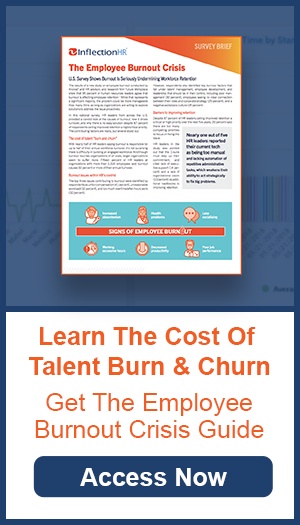For the past few years, AI has been touted as revolutionary: It was supposed to eliminate more than half of all jobs, completely alter our concept of living, and do almost everything for us. None of that has happened. AI is still at the (very) complex decision-tree stage. Big data has gone through a similar hype cycle, and for recruiting it has not been nearly as beneficial as expected. Is the projected impact of big data an urban legend when it comes to hiring and managing people, or is it still going to change cloud-based talent acquisition software one day?
Why Big Data Is Not Panning Out for Recruiting - At Least Not Yet
It's helpful to take a closer look at the definition of big data because it's more than just a lot of information. Instead, big data is a fully three-dimensional construct. The term gained currency in the early 2000s as a way to describe a considerable volume of information, received at an unprecedented velocity, in near-real time and composed of all types of formats.
Perhaps you've already spotted the first problem with the use of big data in recruiting: It's overwhelming. Unless your recruiting team occupies a full floor in your organization (hello, Apple?) you're probably not going to have the capacity or the time to parse through the avalanche of inputs that constitute big data and make your way to the insights. It's simply not practical.
Second, the technology just isn't there yet in the recruiting space. It's possible to cobble together several different systems and code in customizations that could render big data useful, but this would require quite a bit of programming time to assemble, and you'd still be left with the mass of information to analyze. On the other hand, many recruiting systems available today, including our talent acquisition solution, provide readily available key performance indicators (KPIs), which, though an incredibly useful insight, aren't big data.
Small Data Can Help
It's back to the drawing board for data-driven recruiting insights, and that's where small data comes in. Whereas big data requires machine processing as well as human interpretation for analysis, small data is defined as information that can be easily taken in, analyzed and utilized by a human. Small data is actionable, and it can be nuanced. It's data on a human scale, for human solutions, including combating the employee burnout crisis. Put simply, when you ask a colleague what they thought of a recent presentation or meeting, the feedback that you get is small data.

For example, perhaps you're concerned about candidates entering but failing to complete the online application portion of your recruiting process. A big data method of figuring out the issue might demand a review of site traffic patterns, bounce rates, industry comparisons, candidate demographics, your server specs and the like.
Looking at the problem from a small data perspective, you would instead try these options:
- Visit a publicly accessible computer, fill out the application yourself and note your thoughts.
- Ask a friend who's not associated with your company to do so and report back with their impressions.
- Find a few recent hires who entered the recruiting process through your company's online application and get their thoughts about that part of their experience; ask if they have any constructive criticism to share.
- Do a Google search to identify some companies with particularly successful online recruiting sites, and see what they're doing that you might consider incorporating into your process.
This is all small data, and it's imminently actionable. Analytics can't capture the emotional response to a process, especially when combating employee burnout.
Real Applications for Small Data in Recruiting
Small data isn't limited to tweaking your physical systems, of course. The author of "Small Data," Martin Lindstrom, notes that where "Big Data is all about finding correlations ... [s]mall Data is all about finding the causation, the reason why," and these "reasons why" can be applied throughout the recruiting lifecycle. Here are just a few applications:
- Determining which sources generate the most successful candidates and fine-tuning placements.
- Pinpointing and easing bottlenecks in the hiring process.
- Generating more diverse candidates.
- Increasing retention rates.
When it comes to refining your recruiting process, more information isn't always better. Big data is only useful if it's not too unwieldy to take in and act upon, and good things do come in small packages. Plus, when it comes to recruiting, it's essential to remember that you're hiring people, and while it's business, this is a process that by definition involves emotion. The upshot? In revolutionizing your recruiting efforts, it's time to think small for success! Contact Inflection HR today to learn how we can help your company drive success in your recruiting process.


